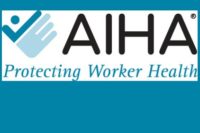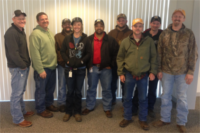It’s Tuesday Sept 14 at the ASSP conference in Austin and on a day when an afternoon general session addresses “Well-Being: What Does It Have to Do With Safety?” a tour of the expo floor finds numerous vendors offering health-related services. And we’re not just talking about first aid kits.
The general session addresses the emphasis on health: “Worker safety, health, and well-being is a critical topic given the physical, mental, and emotional toll of the ongoing pandemic. It’s important to understand how the conditions of work impact worker health and well-being in addition to their effects on safety. An expert panel will discuss Total Worker Health® strategies to reduce stress and improve safety, health and well-being at work.”
Here's a sampling of booths on the exhibit floor:
“Think Health” – “be healthier and feel stronger”
“The Industrial Athlete” – incorporates sports medicine practices
“Pain Relief” – with an electronic massager
“Consolidate your workforce health data”
“Improve your workforce well-being through sports medicine practices” – including early intervention, warm ups and employee physical exams
“Workforce health & wellness” using clinics and triage
“The working athlete” – “Work hard. Stay hydrated.”
“Care for your workforce and build a healthier workplace using industrial sports medicine.”
Many safety pros have been loathe to call their employees “human capital,” but in 2021 it’s clear more companies than ever are interested in and spending money on the health of their “human capital.” Wellness programs have been around for decades, but today’s health focus is not on treadmills and walking trails. There’s much money to be saved in reduced health care costs and fewer lost workdays. This means being proactive about employee health, with screenings, assessments, early interventions and taking a holistic approach to employee health 24/7/365 – on and off the job. This is in contrast to the traditional reactive approach to employee health – injury treatment and return to work programs.
And it means paying attention to the pillars of employees’ health: diet, sleep, exercise and a healthy lifestyle, and social support for better emotional and cognitive health.
OSHA is also putting more weight behind the “health” in “occupational safety and health.” The pandemic has riveted attention on communicable diseases and OSHA is hard at work now on an emergency temporary standard requiring employers with 100+ employees to mandate vaccines or testing for employees. It is also in the early stages of writing a broad infectious diseases standard.



